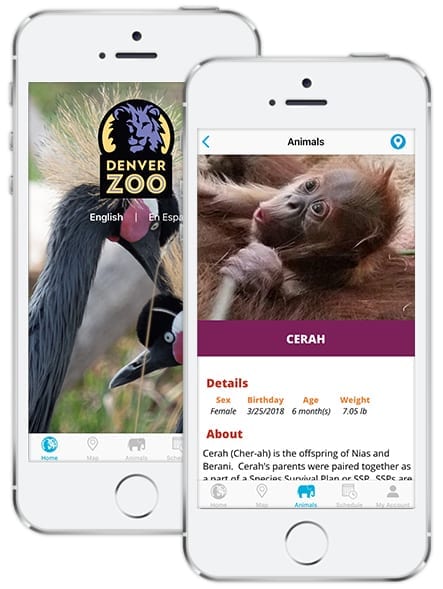Classification
Class Mammalia
Order Primate
Family Lemuridae
Genus Lemur
Species catta
Habitat & Range
Ring-tailed lemurs prefer spiny forest, lowland gallery forest, dry scrub, dry deciduous forest and rock canyons.
This species is only found in south and southwest Madagascar.

Ring-tailed Lemur
Lemur catta
Ring-tailed lemurs communicate with vocalizations and scent marking. They are one of the most vocal primates with at least 15 different vocalizations including one call for aerial predators and another for terrestrial predators. There is a call to bring troop members together, and an alarm call uttered in unison by the whole troop.
Adaptations
- Ring-tailed lemurs are diurnal, or active during the day.
- They are terrestrial, meaning they spend most of their time on the ground, though they are still agile in trees.
- Males scent-mark with a wrist gland that also has a horny pad used to gouge scent into bark.
- They keep their ringed tails in the air when they travel as visual communication to keep the group together.
- They have six lower teeth that stick straight out from the jaw forming a “comb” that they use to groom their own fur and that of other members of the troop.
- They are one of the most vocal primates with several different alarm calls.
Physical Description
- The ring-tailed lemur has a very distinctive bushy tail with thirteen alternating black and white bands.
- They are about the size of a house cat with a head and body length of 17 inches (42.5 cm) Their tail is 24 inches long (60cm). They weigh 4 ½ - 5 ½ pounds (2.0 – 2.4kg).
- They have gray to rosy brown fun on the back, gray limbs and haunches and dark gray heads and necks.
- Their undersides are white and their faces are white with dark triangular eye patches and a black pointed muzzle.
What Does It Eat?
In the wild: This species of lemur eats fruit, leaves, flowers, bark, sap, large insects and sometimes small vertebrates like chameleons. They will occasionally consume soli to supplement their diet.
At the zoo: The troop of lemurs is fed vegetables, greens, starches, a low starch gel, biscuits, and a small amount of dried fruit for training.
What Eats It?
Their main natural predators are the Madagascar harrier-hawk, Madagascar buzzard and fossas.
Social Organization
Ring-tailed lemurs are the largest groups of all lemurs in Madagascar. The ratio of males to females is about 50:50 plus young. Groups which are called troops are numbered anywhere between 3 and 35 individuals. Females are dominant over the males. It is a matriarchal society where the males leave when they become sexually mature at 2.5 – 3 years. Males continue to change groups every 3 to 5 years throughout their lives.
Life Cycle
Ring-tailed lemurs usually give birth to a single offspring, but twins occur occasionally. Gestation is about 130 – 144 days and babies are born in September when food becomes abundant. The young lemurs weight 3–4 oz (85–113 gm) at birth and can immediately cling to the mother’s belly where they stay for about for 1-2 weeks. They then midrate to her back for another 1 -2 weeks and begin walking at about four weeks, returning to their mother only to eat and sleep. Offspring are independent at about six months. Their life expectancy is 15 – 16 years in the wild and around 20 years in captivity.
Collection Connection
The ring-tailed lemurs live in Primate Panorama in the Emerald Forest building.
- Kermit was born on 4/23/96. He was named this because of his resemblance to Kermit the Frog.
- Waldorf was born on 3/20/97.
- Zonker was born on 3/22/15. He is one of the more curious lemurs. You can often find him outside in nice weather climbing to the top of the mesh to pull leaves off of nearby trees.
- Baldwin was born on 4/27/15. He loves to sit by the front glass and watch guests. He often sits on enrichment or inside cardboard boxes.
Conservation Status
IUCN Status: Endangered
The ring-tailed lemur has lost habitat due to burning, overgrazing and wood harvesting for charcoal production. They are also hunted for food or captured and kept as pets.

Download the App!
Get the FREE Denver Zoo app today, and be a pro the next time you visit the Zoo. You’ll get access to the Zoo map, daily activities and schedules, animal facts, and more. You can even load your membership card onto the app for additional convenience. It puts everything you need for an amazing Zoo experience right into the palm of your hand!



